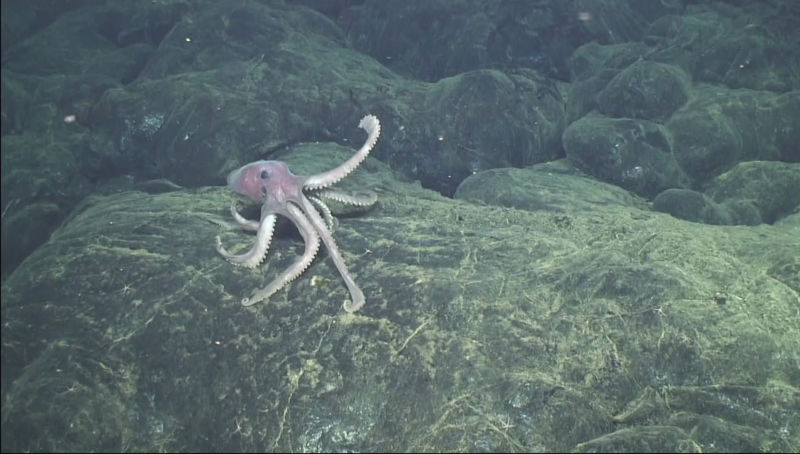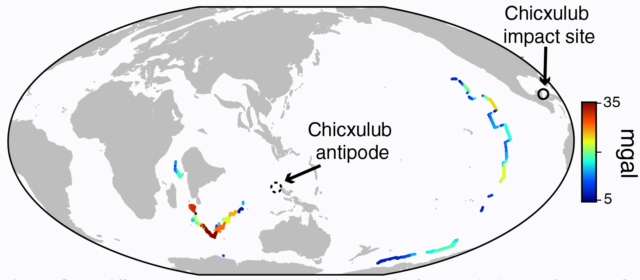
The mass extinction at the end of the Cretaceous, which terminated the reign of the dinosaurs, is nothing if not imagination fuel. It’s hard to wrap your head around a cataclysm of such impossible scale, but it’s easy to drown in ideas about how it played out.
The impact of an asteroid off what is today the Yucatán Peninsula, near the town of Chicxulub, seems to be a straightforward entry in the “unusually bad” column. The subsequent global wildfires and soot-blackened skies expands the scale a bit. But the extinction event took place at the same time as the massive Deccan Traps volcanic eruptions in modern-day India, which began even before the Chicxulub impact.
A lot of work has looked at the extent to which the Deccan Traps eruptions influenced the extinctions, and many experts have considered whether the impact could have boosted the eruption rate on the other side of the world. But a new study by Joseph Byrnes at the University of Minnesota and Leif Karlstrom at the University of Oregon headed off in a different direction: were other, additional volcanoes affected by the impact?
For most lone volcanoes, that would be a very difficult question to answer. The mid-ocean ridges on the seafloor, however, keep records. These ridges are plate-tectonic rifts where magma rises to create oceanic rock that the seafloor on either side pulls away like twin conveyor belts. That means you can read the history of the mid-ocean ridge volcanism by examining the seafloor, with distance from the rift related to time. If the Chicxulub impact stimulated mid-ocean ridges to barf up more lava, you should find some 66-million-year-old seafloor that is thicker than its surroundings.
To see if this was the case, Byrnes and Karlstrom relied primarily on satellite measurements of variations in Earth’s gravitational pull. Gravity varies ever so slightly based on the thickness and density of Earth’s crust. So as the satellite passes over thicker seafloor, it registers just a little more gravitational pull. The researchers also checked with a global dataset of seafloor topography, but that data is actually partly derived from the same gravity measurements.
There are ridges all around the globe, but the researchers pooled the data by dividing the oceans into a grid tagged with the age of the seafloor in each location. Then they could analyze all the 1 million-year-old seafloor regions together, the 2 million-year-old seafloor regions as a group, and so on back to 100 million years ago (that includes most of the Earth’s seafloor).
In the end, the researchers found an anomalous bump of high-gravity measurements right at the time of the mass extinction 66 million years ago. The same thing could be seen in the seafloor topography data, although it stands out less clearly. However, this is only true for the faster-spreading mid-ocean ridges of the Pacific and Indian Oceans. Slower spreading in the Atlantic means that the history recorded in the seafloor is squished together, and this pattern was hard to see—or it might just not be there.

The researchers tried to estimate the amount of extra erupted lava represented by these bands of thickened seafloor. They came up with something in the neighborhood of a few hundred thousand to several million cubic kilometers. For context, the Deccan Traps eruptions—which were likely a large part of the mass extinction—spewed a total of around one million cubic kilometers of lava.
The idea here is that the massive release of seismic energy from the Chicxulub impact would shake up the molten rock beneath the mid-ocean ridges, temporarily causing more to reach the surface. That might have boosted seafloor eruptions for thousands or tens of thousands of years.
The researchers note that this lends some support to suggestions that the impact event affected the Deccan Traps eruptions—linking the two killers to some degree. But this also adds (at least) a third killer to the equation. Increasing seafloor eruptions would add to the misery in the oceans and could explain some previously identified chemical clues. Land and ocean records both show a shift in carbon isotopes, but it lasts much longer in the oceans—which could be because of volcanic gases and increased hydrothermal vent activity on the seafloor. Lithium isotopes, too, record a sudden change in the ocean that could be the result of seafloor eruptions.
There is also fossil evidence of marine extinctions that could be explained by significant ocean acidification, the researchers say. That could make more sense if mid-ocean ridge eruptions were pumping out extra CO2.
Increased volcanism apart from the Deccan Traps eruptions adds yet another element to account for as we puzzle over the end-Cretaceous apocalypse. It seems that any time you think you know how bad that event was, you find out it was even worse.
Science Advances, 2018. DOI: 10.1126/sciadv.aao2994 (About DOIs).
reader comments
29